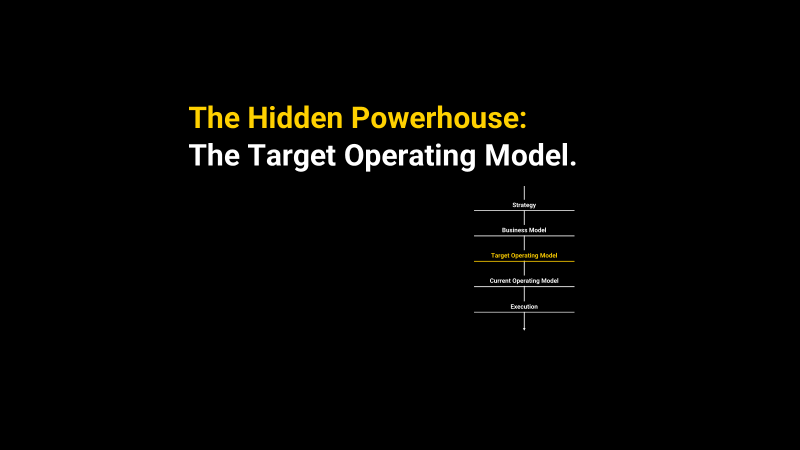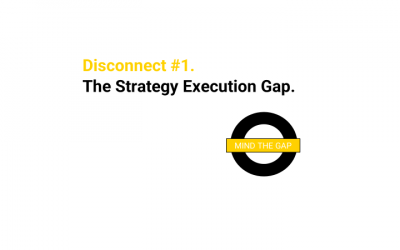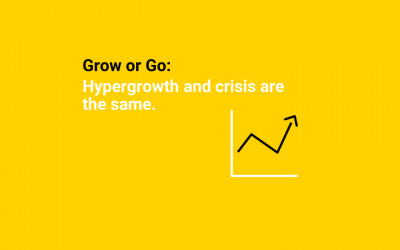The Hidden Powerhouse: The Target Operating Model.
During a phase of hypergrowth, ClimateTech companies face the choice to “grow or go.” They must prioritize scalability and efficient growth through strategic vision, execution, and adaptability to make a significant impact in the industry.

The dynamic duo: Business and Operating Model.
Firms commonly prioritize the well-known Business Model, which outlines revenue generation and customer value creation. The Business Model encompasses the overall strategy and approach a company uses to create, deliver and capture value for its customers. It includes factors such as the product or service offering, target market, pricing, and revenue streams.
On the other hand, the Target Operating Model (TOM) defines how a company’s operations and resources are organized to support the delivery of the Business Model. It encompasses the company’s structure, processes, technology, and people required to execute the Business Model effectively. It includes factors such as the organization’s governance, organizational design, resource allocation, and technology systems.
The significance of the Target Operating Model is frequently underestimated. It plays a critical role in executing the Business Model effectively and efficiently. It’s important for business leaders to have a good understanding of both the business model and the target operating model, as they are both critical components of a successful business strategy. By understanding the TOM, business leaders can ensure that the internal operations and processes of the organization are aligned with the business strategy and are optimized to deliver value to customers
In the past, businesses may have achieved success despite having suboptimal operating models. However, as organizations grow more complex and encounter new challenges, the Target Operating Model gains increasing importance in today’s business landscape.
The Hidden Powerhouse: The Target Operating Model.
The Target Operating Model plays a crucial role in bridging the strategy execution gap. It is the foundation of how a business operates and delivers value to its customers.
The Target Operating Model outlines how:
- Goals and strategies are translated into actionable plans for people, data, processes, and technology.
- The business model is executed to ensure the delivery of value to customers.
- Daily operations are designed to be efficient and effective in executing the organization’s objectives.
By defining and implementing a well-structured TOM, businesses can align their resources, processes, and technologies with their strategic goals. This enables smoother execution, enhances operational efficiency, and increases the likelihood of achieving desired outcomes.
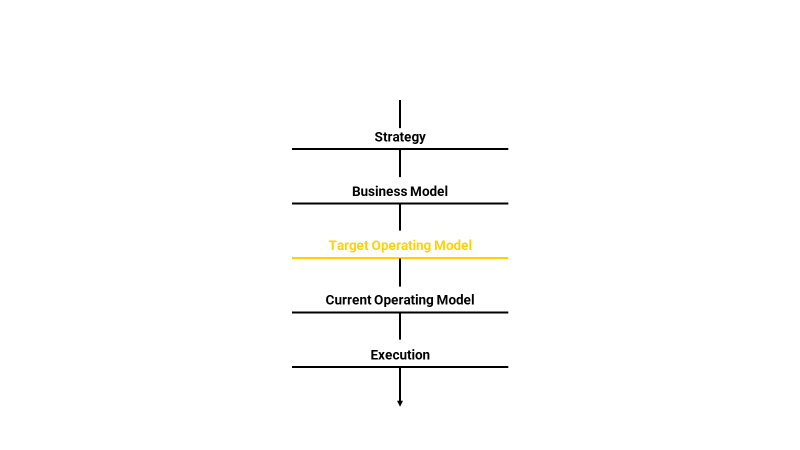
Hyperscaling companies need a fitting operating model. Before scaling.
Developing a fitting and adjustable Target Operating Model (TOM) is essential for companies before scaling, and it needs to be continuously adjusted throughout each phase of the scaling journey. Without a well-designed TOM, firms may experience various challenges and pain points associated with growth.
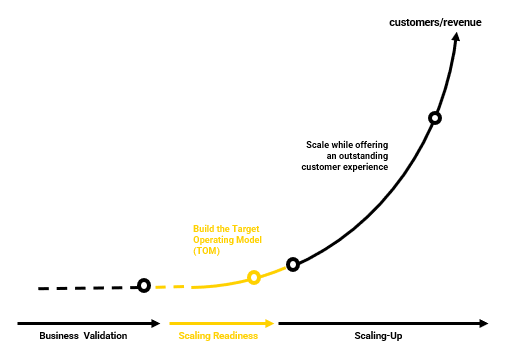
Developing a fitting and adjustable Target Operating Model (TOM) is essential for companies before scaling, and it needs to be continuously adjusted throughout each phase of the scaling journey. Without a well-designed TOM, firms may experience various challenges and pain points associated with growth.
Here’s a breakdown of the importance of adjusting the TOM at different stages:
- Startup Phase: Focus on validating the business model, with a simple and flexible TOM for experimentation, feedback gathering, and refining the value proposition.
- Early Scaling: Adapt the TOM to handle increased demands, scaling infrastructure, optimizing processes, and establishing efficient communication channels while ensuring a positive customer experience.
- Rapid Scaling: Adjust the TOM to address scalability challenges through automation, streamlined workflows, and clear roles, enabling efficient operations and maintaining quality amidst exponential growth.
- Mature Scaling: Evolve the TOM to sustain growth and manage complexities, optimizing collaboration, decision-making, and aligning the organization’s structure with strategic goals.
Continuous Improvement: Foster a culture of ongoing enhancement by regularly evaluating the TOM, identifying areas for optimization, and implementing changes based on feedback and metrics.
An adjustable TOM helps hyperscaling companies optimize operations, enhance the customer experience, streamline processes, and align with strategic objectives, ensuring sustainable scaling and minimizing challenges.
